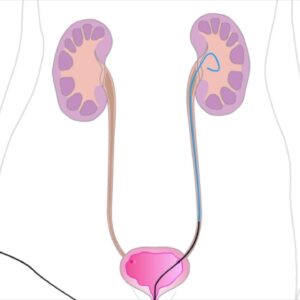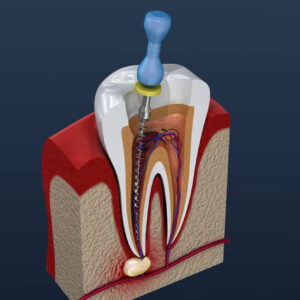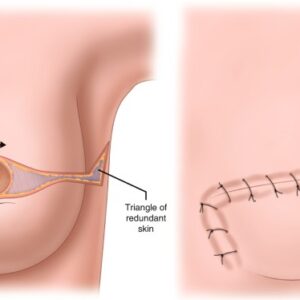Description
Familiarity with treatment
Prominent ear correction, also known as otoplasty, is a surgical procedure performed to improve the appearance of ears that stick out prominently from the head. The procedure aims to reshape the cartilage and reposition the ears closer to the head, creating a more balanced and natural-looking appearance.
The specific technique used for prominent ear correction may vary among surgeons, but here is a general overview of the procedure:
Anesthesia: Otoplasty is typically performed under local anesthesia with sedation or general anesthesia, depending on the patient’s preference and the surgeon’s recommendation.
Incision Placement: The surgeon will make incisions behind the ear, in the natural creases where the ear meets the head. This allows for discreet incisions that are well-hidden.
Cartilage Reshaping: The surgeon will access the underlying ear cartilage through the incisions. The cartilage is then reshaped and sculpted to create a more desirable ear contour. Techniques may involve scoring or suturing the cartilage to create or enhance the antihelical fold (the inner ridge of the ear) and reduce the prominence of the concha (the bowl-shaped part of the ear).
Repositioning and Suturing: Once the desired shape and position of the ear are achieved, the surgeon will secure the cartilage with internal sutures to maintain the new shape and position. These sutures help hold the ear closer to the head.
Closing Incisions: The incisions are carefully closed with sutures, and the surgeon may use absorbable or removable sutures depending on the case.
Postoperative Dressing: After the procedure, the surgeon will apply a dressing or bandage around the head to protect the surgical site and provide support to the newly positioned ears. This dressing is usually worn for a few days to a week.
Who is it suitable for?
Prominent ear correction, or otoplasty, is suitable for both children and adults who have ears that stick out prominently from the head and wish to improve their appearance. Here are some key points regarding the suitability of prominent ear correction:
Children: Otoplasty is commonly performed on children who are at least 5 years old and have fully developed ears. By this age, the cartilage is firmer, and the child is typically mature enough to participate in the decision-making process and follow post-surgical care instructions. It’s important for both the child and their parents to express a desire for the procedure.
Adults: While otoplasty is more commonly associated with children, adults can also undergo the procedure to correct prominent ears. Adults may choose otoplasty if they have been bothered by their ear appearance since childhood or if they have experienced changes in ear prominence due to factors such as trauma or aging.
Suitability Assessment: The suitability for otoplasty is determined through a thorough analysis of the individual’s medical history and a comprehensive clinical consultation with a plastic surgeon. Factors such as the specific characteristics of the prominent ear, the condition of the ear cartilage, and the patient’s expectations are taken into consideration.
Techniques: The surgical techniques used for prominent ear correction may vary depending on the individual’s needs. Common techniques include creating or enhancing the antihelical fold (the inner ridge of the ear) through scoring or suturing the cartilage, reducing the size of the conchal bowl (the bowl-shaped part of the ear), and repositioning the ear closer to the head.
Who is it not suitable for?
Prominent ear correction, or otoplasty, is generally suitable for both children and adults who have ears that stick out prominently from the head and wish to improve their appearance. However, there are some considerations to keep in mind regarding suitability:
Children: Otoplasty is commonly performed on children who are at least 5 years old and have fully developed ears. By this age, the cartilage is firmer, and the child is typically mature enough to participate in the decision-making process and follow post-surgical care instructions. It’s important for both the child and their parents to express a desire for the procedure. Otoplasty may be available on the NHS for children who need it and meet certain criteria, but availability can vary.
Adults: While otoplasty is more commonly associated with children, adults can also undergo the procedure to correct prominent ears. Adults may choose otoplasty if they have been bothered by their ear appearance since childhood or if they have experienced changes in ear prominence due to factors such as trauma or aging. However, it’s important to note that otoplasty on the NHS for adults is rare and usually only considered if the prominent ears are causing significant distress.
Medical Evaluation: The suitability for otoplasty is determined through a thorough analysis of the individual’s medical history and a comprehensive clinical consultation with a plastic surgeon. Factors such as the specific characteristics of the prominent ear, the condition of the ear cartilage, and the patient’s expectations are taken into consideration.
Psychological Distress: In some cases, otoplasty may be considered for individuals who experience significant distress or psychological impact due to their prominent ears. However, the availability of otoplasty on the NHS for adults in such cases is rare.
Advantages
Prominent ear correction, or otoplasty, offers several advantages for individuals who are bothered by ears that stick out prominently from the head. Here are some of the advantages of prominent ear correction:
Improved Appearance: The primary benefit of otoplasty is the improvement in the appearance of the ears. By reshaping the cartilage and repositioning the ears closer to the head, otoplasty can create a more balanced and natural-looking ear shape. This can enhance facial symmetry and boost self-confidence.
Correction of Congenital Deformity: Prominent ears are often a congenital deformity, meaning they are present from birth. Otoplasty provides an opportunity to correct this deformity and bring the ears into a more aesthetically pleasing position.
Customized Results: Otoplasty is a highly customizable procedure. The surgeon can tailor the surgical technique to address the specific concerns of each individual. This allows for personalized results that meet the patient’s desired outcome.
Minimal Scarring: The incisions made during otoplasty are typically placed behind the ear, in the natural creases where the ear meets the head. This placement helps to minimize visible scarring, as the incisions are well-hidden.
Long-lasting Results: Otoplasty provides long-lasting results. Once the ears are reshaped and repositioned, they will maintain their new position and shape for many years to come.
Psychological Benefits: Correcting prominent ears through otoplasty can have positive psychological effects. Many individuals who undergo otoplasty experience improved self-esteem and a greater sense of confidence in their appearance.
Complications
Prominent ear correction, or otoplasty, is generally considered a safe procedure. However, like any surgical procedure, there are potential complications that can occur. Here are some of the complications that may be associated with prominent ear correction:
Hematoma: Hematoma refers to the collection of blood under the skin, which can occur after surgery. It is one of the most commonly reported complications of otoplasty 1.
Infection: Although rare, there is a risk of infection following otoplasty. Proper surgical techniques and postoperative care can help minimize this risk.
Skin Changes: Skin changes, such as scarring, skin tattooing, or skin necrosis, can occur as a result of otoplasty However, it’s important to note that scarring is typically minimal and well-hidden behind the ear.
Asymmetry: Achieving perfect symmetry is challenging in any surgical procedure, including otoplasty. While efforts are made to create balanced results, there is a possibility of slight asymmetry between the ears.
Overcorrection or Undercorrection: In some cases, the desired outcome of otoplasty may not be fully achieved. This can result in overcorrection (ears appearing too close to the head) or undercorrection (ears still protruding to some extent).
Persistent Prominence: In rare cases, the prominence of the ears may persist or recur after otoplasty. This can happen due to factors such as inadequate cartilage reshaping or insufficient suturing 2.
preoperative care
The preoperative care for prominent ear correction, or otoplasty, involves several important considerations. Here are some key points to keep in mind:
Consultation and Planning: The first step in the preoperative process is to consult with a qualified plastic surgeon who specializes in otoplasty. During this consultation, you will discuss your goals, expectations, and any concerns you may have. The surgeon will evaluate your ears, assess your suitability for the procedure, and discuss the surgical technique that will be used.
Medical Evaluation: Before undergoing otoplasty, a comprehensive medical evaluation will be conducted. This evaluation may include a review of your medical history, physical examination, and possibly some laboratory tests. The purpose of this evaluation is to ensure that you are in good overall health and a suitable candidate for surgery.
Understanding the Procedure: It’s important to have a clear understanding of the otoplasty procedure, including the potential risks, benefits, and expected outcomes. Your surgeon will explain the details of the surgery, including the incision placement, cartilage reshaping techniques, and any additional procedures that may be necessary.
Preoperative Instructions: Your surgeon will provide you with specific preoperative instructions to follow before the surgery. These instructions may include:
- Avoiding certain medications, such as aspirin and non-steroidal anti-inflammatory drugs (NSAIDs), for a specified period before surgery to minimize the risk of bleeding.
- Refraining from smoking, as nicotine and tobacco smoke can delay healing and increase the risk of complications.
- Arranging for transportation to and from the surgical facility, as you may not be able to drive yourself after the procedure.
- Fasting for a certain period before the surgery, as instructed by your surgeon.
Managing Expectations: It’s important to have realistic expectations about the outcome of the surgery. Your surgeon will discuss the potential results with you and help you understand what can be achieved through otoplasty. They will also address any concerns or questions you may have.
Postoperative care
The postoperative care following prominent ear correction, or otoplasty, is crucial for proper healing and optimal results. Here are some general guidelines for postoperative care:
Dressing and Bandages: After the surgery, your surgeon will apply a dressing or bandages to protect the surgical site. It’s important to follow your surgeon’s instructions regarding the care of the dressing. Keep the dressing dry and avoid getting water on the area until your surgeon advises it is safe to do so.
Pain Management: You may experience some discomfort or pain after the surgery. Your surgeon will prescribe pain medication or recommend over-the-counter pain relievers to manage any discomfort. Follow your surgeon’s instructions regarding pain management.
Activity Restrictions: It’s important to limit physical activities and avoid any strenuous activities that can put strain on the ears during the initial healing period. Your surgeon will provide specific instructions on when you can resume normal activities, including exercise and sports.
Follow-up Appointments: You will have scheduled follow-up appointments with your surgeon to monitor your healing progress. Attend these appointments as advised and discuss any concerns or questions you may have.
Wound Care: Your surgeon will provide instructions on how to care for the surgical incisions. This may include cleaning the incisions, applying ointments or dressings, and keeping the area clean and dry. Follow your surgeon’s instructions carefully to promote proper healing and minimize the risk of infection.
Avoiding Pressure on the Ears: It’s important to avoid any pressure or trauma to the ears during the healing process. Be cautious when sleeping, wearing headphones, or participating in activities that may put pressure on the ears.
Follow a Healthy Lifestyle: Maintaining a healthy lifestyle can contribute to the healing process. Eat a balanced diet, stay hydrated, and avoid smoking, as smoking can impair the healing process.






Reviews
There are no reviews yet.